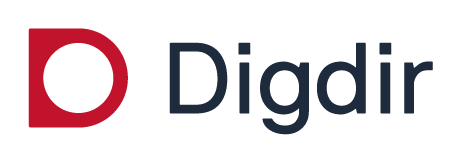Velkommen til utstillingsrommet med demodatasett, som demonstrerer bruken av DCAT-AP-NO!
DCAT-AP-NO ⧉ er den norske applikasjonsprofilen av EUs DCAT-AP ⧉ og W3Cs DCAT ⧉, for beskrivelse av datasett, datatjenester og datakataloger.
Tilbakemelding: Vennligst registrer eventuelle tilbakemeldinger som Github Issues ⧉.
Forbehold: Demoressursene tilgjengeliggjort via de enkelte utstillingsrommene er kun ment for demo- og testingsformål.
Resten av teksten er kun på engelsk.
Purpose
This showroom is meant to
-
demonstrate how to use DCAT-AP-NO to describe a dataset and publish the description in a data portal such that the dataset is findable via the data portal;
-
demonstrate some cross-references between datasets and other resources demonstrated in some of the other showrooms;
-
provide reusable, machine-readable datasets and dataset descriptions, for testing and demonstration purposes.
Disclaimer: The machine-readable demo datasets are meant for demo purposes only. They do not represent any real world phenomena at all. On the other hand, they are supposed to syntactically conform to DCAT-AP-NO.
Demo resources in this showroom
In this showroom we have a demo dataset, called "Demo controlled vocabulary 1":
-
The dataset description shown here, describes the demo classification called "Demo controlled vocabulary 1" that is demonstrated in our showroom with demo classifications.
-
This is because a classification with its categories is a dataset.
-
The difference between the two showrooms is: The showroom here illustrates how to describe a dataset in accordance with DCAT-AP-NO such that it is findable via e.g. the National Data Catalog, while the other showroom illustrates how to make available the dataset itself.
-
-
The demo dataset (= our demo classification) is here described as an open dataset, i.e.,
-
freely available, with access rights (dct:accessRights) ⧉ set to "public", and
-
with a distribution ⧉ under licence ⧉ "CC0" which is an open licence.
-
-
The distribution, which has https://data.norge.no/showroom/xkos-ap-no/demo-classifications as it’s asscess URL ⧉
-
supports machine-readable format (dct:format) ⧉ "RDF_TURTLE",
-
supports human-readable format "HTML", and in addition supports English and Norwegian Bokmål depending on the preference set in the browser.
-
-
This dataset description is automatically harvested to and thus findable via the demo portal ⧉.
Some cross-references with other demo resources
Note: Not all possible cross-references are demonstrated in this showroom. The lists are thus not exhaustive.
Datasets and classifications, for example:
-
A classification with its categories, is a dataset.
-
This showroom shows how to describe our demo classification as an open dataset, and publish the description in the demo portal such that this dataset (our demo classification) is findable via the demo portal.
-
-
When describing a dataset, and where coded values are used, the coded values should preferably be concepts chosen from controlled vocabularies (i.e., classifications).
-
For example, in the description of our demo dataset, the property access rights (dct:accessRights) ⧉ refers to "PUBLIC" which is chosen from EU’s controlled vocabulary Access right ⧉, and the format (dct:format)↗ of the distributions refer to "RDF_TURLE" and "HTML" which are chosen from EU’s controlled vocabulary File type ⧉.
-
Classifications should therefore be made available, also machine-readably.
-
Datasets and concepts, for example:
-
A dataset may refer to concepts that the dataset represents or concepts that are relevant for understanding the dataset.
-
For example, in the description of our demo dataset, the property concept (dct:subject) ⧉ refers to "demo concept 1" and "demo concept 2" that are demonstrated in our showroom with demo concepts.
-
Datasets and information models, for example:
-
A dataset (and/or its distributions, data services) may conform to one or more standards (incl. information models).
-
Our demo dataset conforms to (dct:conformsTo) ⧉ XKOS-AP-NO and its information models.
-
Information models should therefore be made available, also machine-readably.
-
Datasets and services/events, for example:
-
A dataset may be used as the input (evidence) needed in order to execute a service. A service may produce a dataset as the output.
-
This is demonstrated and explained in our showroom with demo services and events.
-
-
An event may be a dataset such that one may subscribe to events in order to provide e.g. proactive services.
-
This is demonstrated and explained in our showroom with demo services and events.
-
